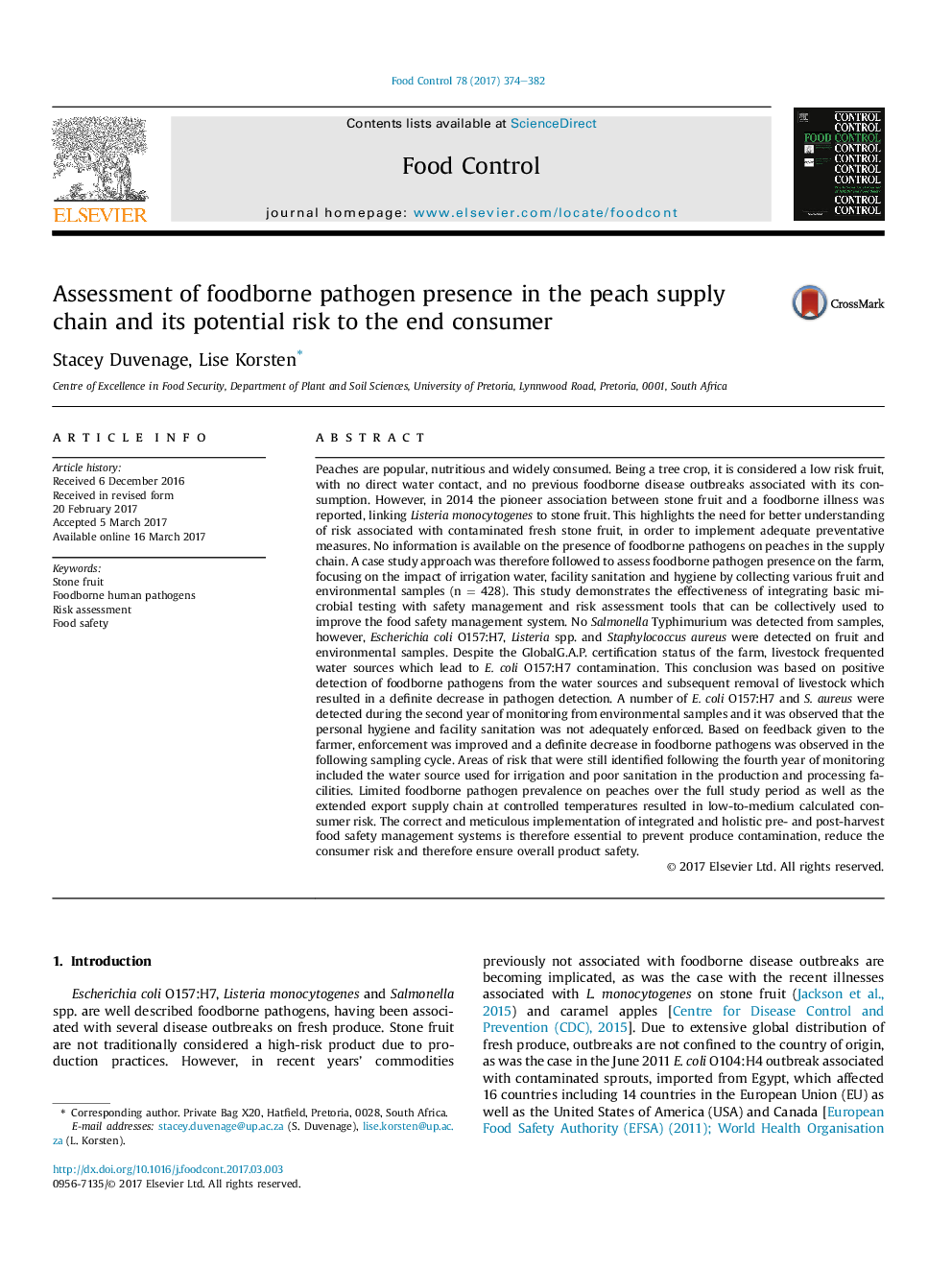| کد مقاله | کد نشریه | سال انتشار | مقاله انگلیسی | نسخه تمام متن |
|---|---|---|---|---|
| 5767528 | 1628386 | 2017 | 9 صفحه PDF | دانلود رایگان |
- No Salmonella Typhimurium was detected from samples (n = 428).
- Livestock that frequented on farm water sources led to E. coli O157:H7 contamination.
- Produce contamination was associated with poorly enforced hygiene and sanitation.
- A resultant low-to-medium consumer risk was calculated.
- Proper implementation of food safety management systems prevents contamination.
Peaches are popular, nutritious and widely consumed. Being a tree crop, it is considered a low risk fruit, with no direct water contact, and no previous foodborne disease outbreaks associated with its consumption. However, in 2014 the pioneer association between stone fruit and a foodborne illness was reported, linking Listeria monocytogenes to stone fruit. This highlights the need for better understanding of risk associated with contaminated fresh stone fruit, in order to implement adequate preventative measures. No information is available on the presence of foodborne pathogens on peaches in the supply chain. A case study approach was therefore followed to assess foodborne pathogen presence on the farm, focusing on the impact of irrigation water, facility sanitation and hygiene by collecting various fruit and environmental samples (n = 428). This study demonstrates the effectiveness of integrating basic microbial testing with safety management and risk assessment tools that can be collectively used to improve the food safety management system. No Salmonella Typhimurium was detected from samples, however, Escherichia coli O157:H7, Listeria spp. and Staphylococcus aureus were detected on fruit and environmental samples. Despite the GlobalG.A.P. certification status of the farm, livestock frequented water sources which lead to E. coli O157:H7 contamination. This conclusion was based on positive detection of foodborne pathogens from the water sources and subsequent removal of livestock which resulted in a definite decrease in pathogen detection. A number of E. coli O157:H7 and S. aureus were detected during the second year of monitoring from environmental samples and it was observed that the personal hygiene and facility sanitation was not adequately enforced. Based on feedback given to the farmer, enforcement was improved and a definite decrease in foodborne pathogens was observed in the following sampling cycle. Areas of risk that were still identified following the fourth year of monitoring included the water source used for irrigation and poor sanitation in the production and processing facilities. Limited foodborne pathogen prevalence on peaches over the full study period as well as the extended export supply chain at controlled temperatures resulted in low-to-medium calculated consumer risk. The correct and meticulous implementation of integrated and holistic pre- and post-harvest food safety management systems is therefore essential to prevent produce contamination, reduce the consumer risk and therefore ensure overall product safety.
Journal: Food Control - Volume 78, August 2017, Pages 374-382
